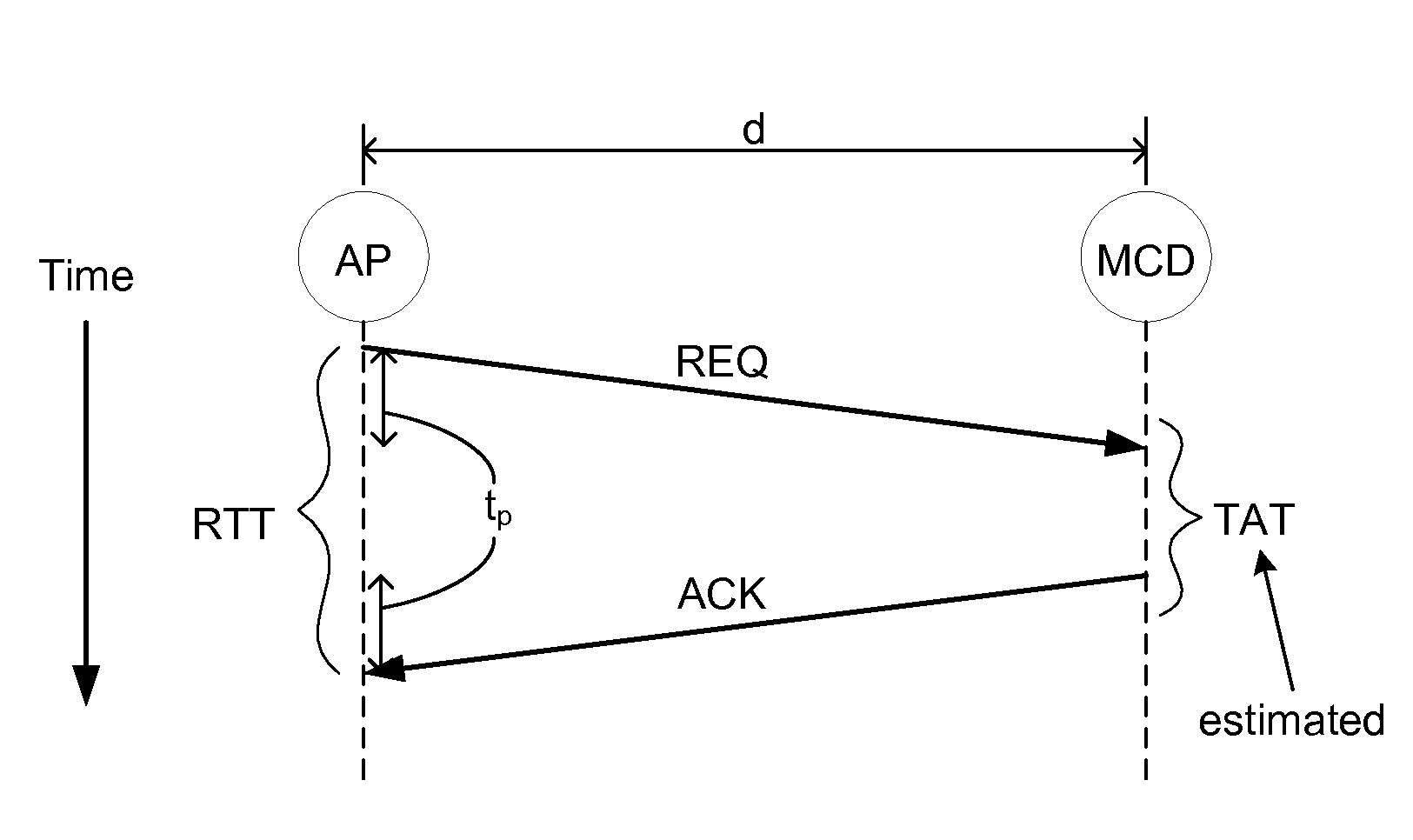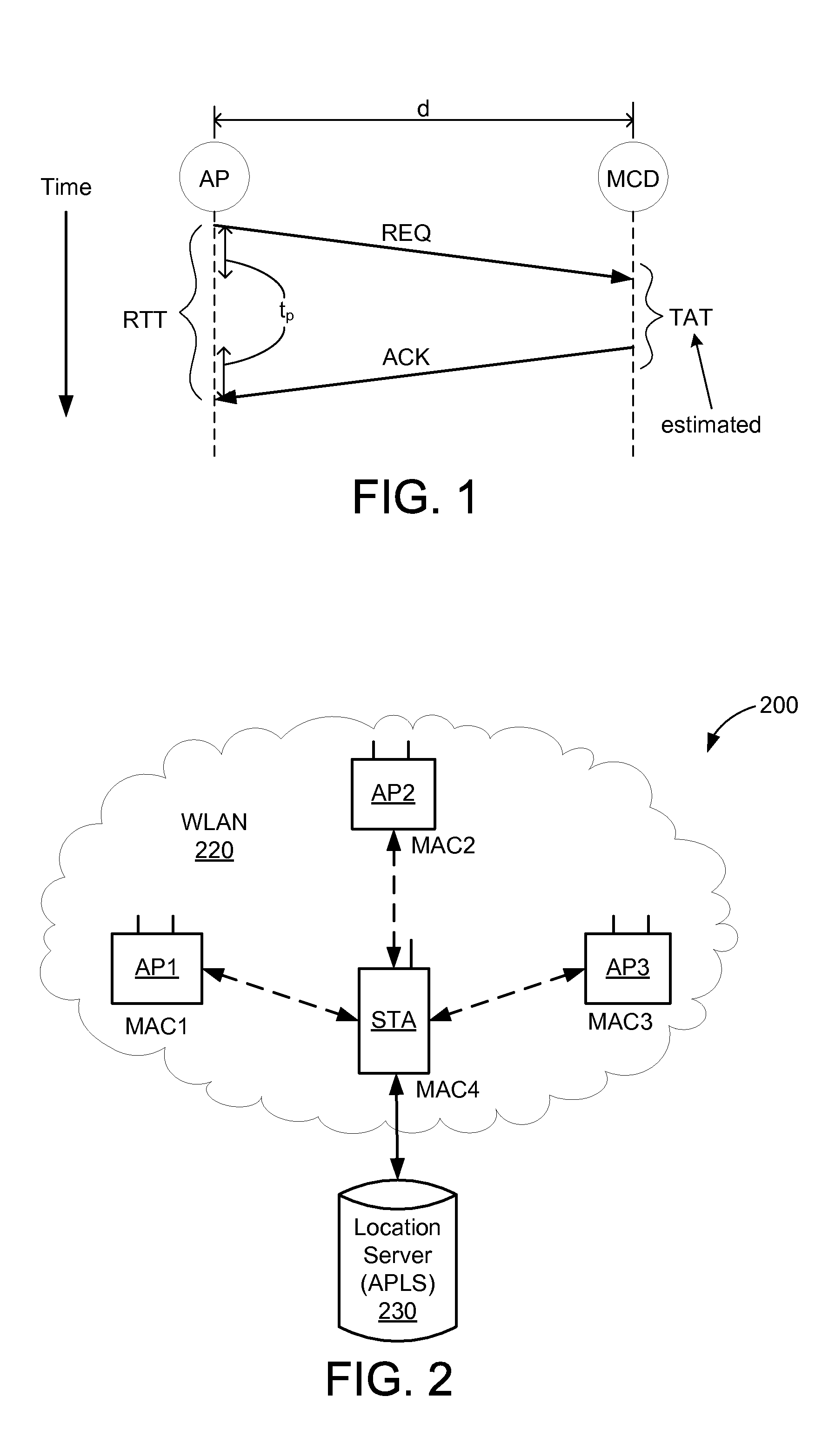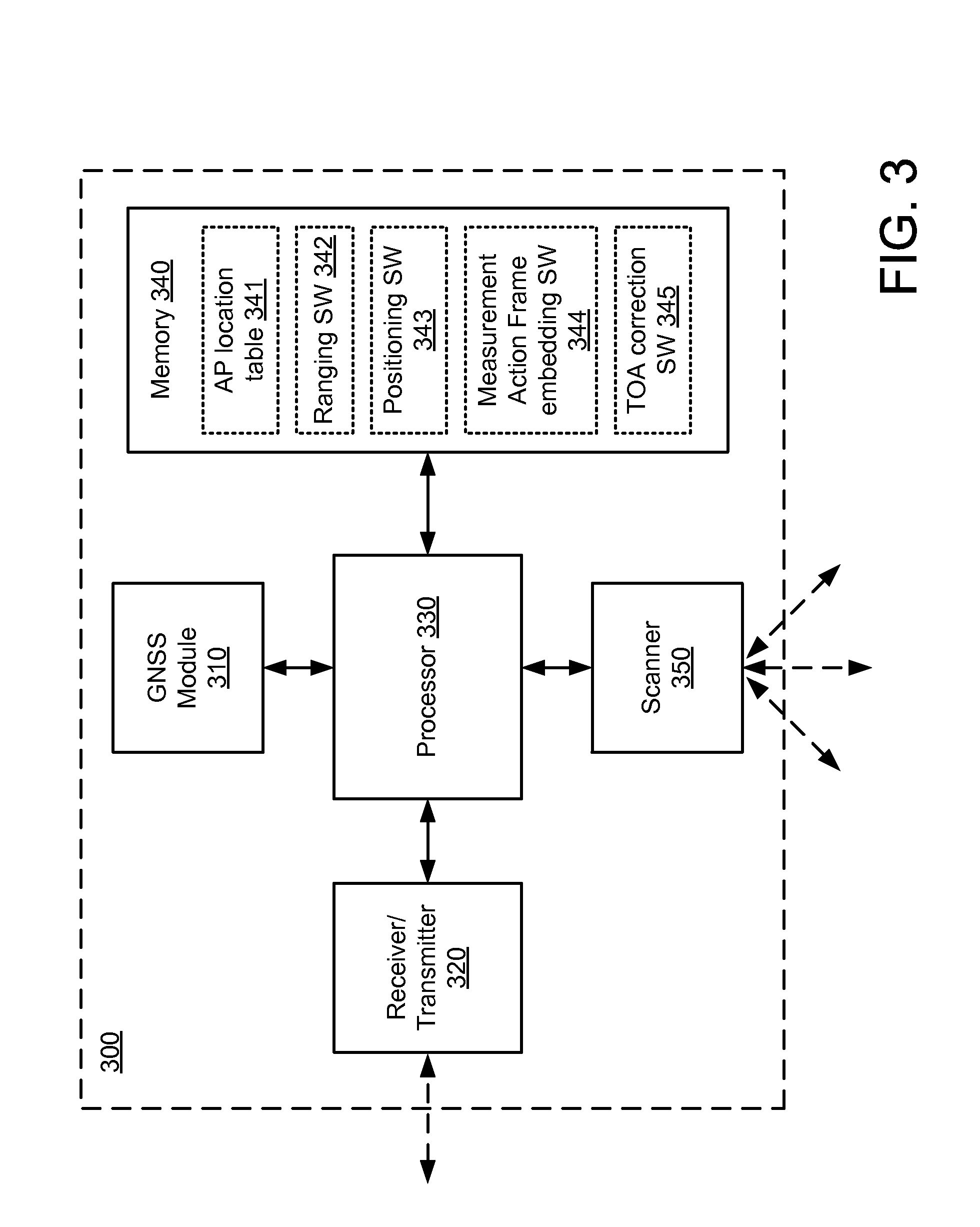Rtt based ranging system and method
a rtt and ranging technology, applied in the field of wireless networks, can solve the problems of large errors in the calculated distance d between ap and mcd, the difficulty the inability of ap to accurately estimate the correct tat for mcd, so as to achieve accurate rtt value and improve the accuracy of ranging operations.
- Summary
- Abstract
- Description
- Claims
- Application Information
AI Technical Summary
Benefits of technology
Problems solved by technology
Method used
Image
Examples
Embodiment Construction
[0017]The present embodiments are described below in the context of ranging operations performed by and between Wi-Fi enabled mobile stations (STA) for simplicity only. It is to be understood that the present embodiments are equally applicable for performing ranging operations using signals of other various wireless standards or protocols, and for performing ranging operations between other devices (e.g., between a STA and a wireless AP, between APs, and so on). As used herein, the terms WLAN and Wi-Fi can include communications governed by the IEEE 802.11 standards, Bluetooth, HiperLAN (a set of wireless standards, comparable to the IEEE 802.11 standards, used primarily in Europe), and other technologies having relatively short radio propagation range.
[0018]In the following description, numerous specific details are set forth such as examples of specific components, circuits, and processes to provide a thorough understanding of the present disclosure. Also, in the following descrip...
PUM
 Login to View More
Login to View More Abstract
Description
Claims
Application Information
 Login to View More
Login to View More - R&D
- Intellectual Property
- Life Sciences
- Materials
- Tech Scout
- Unparalleled Data Quality
- Higher Quality Content
- 60% Fewer Hallucinations
Browse by: Latest US Patents, China's latest patents, Technical Efficacy Thesaurus, Application Domain, Technology Topic, Popular Technical Reports.
© 2025 PatSnap. All rights reserved.Legal|Privacy policy|Modern Slavery Act Transparency Statement|Sitemap|About US| Contact US: help@patsnap.com



